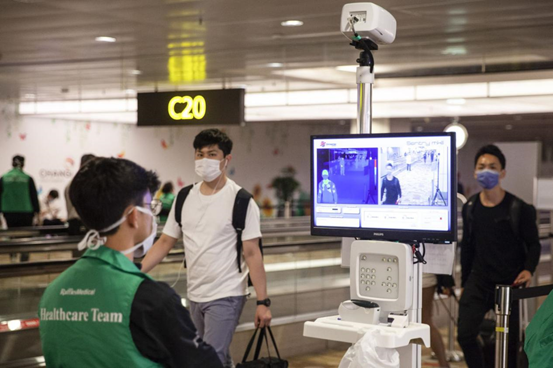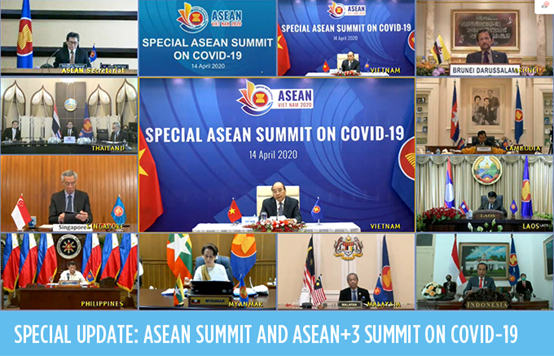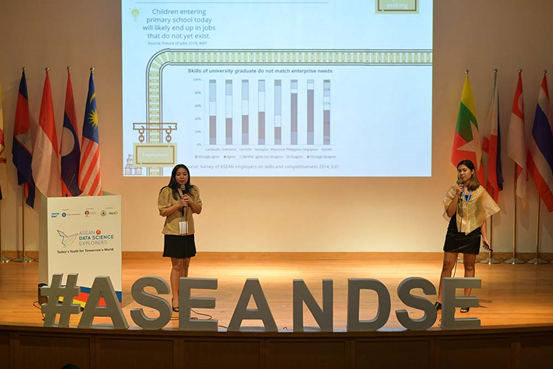

By Preetam Kaushik
The buzz around artificial intelligence (AI) has built to a crescendo with the epidemic prevention and control work of COVID-19. Spurred by rapid strides in research and development, and the ever-increasing power of computing, AI has grown from futuristic fantasy to daily reality.
But as businesses and governments increasingly rely on AI in key areas of the economy, the public seems less enthused. Trust in AI is low across the region. This low level of public confidence could limit AI adoption.

Distrust in AI is prevalent in the Asia-Pacific
According to a recent EY webinar poll conducted among business professionals from the Asia-Pacific region, there is a clear indication that a general lack of public trust in AI is slowing down its adoption rates among business organizations in the region.
Nearly 70% of the respondents agreed that there were considerable hurdles in the path of AI adoption by businesses.
The respondents in the survey, hailing from Australia, ASEAN, China, Japan, and Korea among others, showed a keen interest in adding AI implementations to their businesses. 18% had already started exploring promising AI options. 41% were interested in AI but did not know where to start.
The lack of public trust surrounding AI technologies was highlighted as a major barrier, according to the respondents. The poll suggests that there are three main reasons for this trust deficit. 28% of respondents cited public concerns over the lack of transparency in how AI deals with private data as a hurdle, 24% cited issues of public bias, and 22.6% cited difficulties involved in explaining complex AI technologies to the public.
The complexity of the subject matter is a huge factor
According to Gavin Seewooruttun, EY Asia-Pacific AI and Analytics Advisory Leader, the findings are consistent with other survey results from around the world. “Maintaining transparency can be difficult for organizations as they attempt to understand the collective requirements for data and meaningfully report on these,” he told ASEAN Today.
David Ashton, EY ASEAN Advisory Intelligent Automation Leader, highlighted this particular issue using data collection as an example. “In complex AI models,” he told ASEAN Today, “the specific data point that results in a particular outcome cannot necessarily be isolated. So, the exact reason a customer application was rejected would not be known.”
This leads to frustration among consumers, further eroding the level of trust in AI. The inherent complexity of these advanced models, like those involving deep learning, exacerbates the issue, said Gavin. “Explainability is difficult due to the complexity of AI solutions,” he said.
AI experts have a specific name for this problem — they call it the AI Black Box Problem. Imagine a taxi. Passengers trust the driver because of a variety of factors — he/she is usually trained, licensed, and experienced, and above all, they have a vested interest because any accident would put his/her life in danger as well as the passengers’.

But consider the alternative scenario of a self-driving car. It runs on software. Now, to be able to trust the software, people need to know how it works or “ticks”, how it makes important decisions on the road. But the AI behind self-driving vehicles uses millions of calculations to arrive at decisions. Even AI professionals cannot always immediately identify why a car performed a specific manoeuvre.
Fear of automation replacing humans is highly misplaced
Ever since Karel Capek introduced us to robot slaves, the perception of AI as a threat to human labor has become deep-rooted in our consciousness. There is often a massive disconnect in how businesses and the rest of the population look at the issue of AI and automation.
More than half the EY survey respondents considered automation one of the biggest benefits of AI for businesses. A streamlined workforce augmented by AI could boost productivity, improve worker safety, and reduce overhead costs.
But vocal critics of AI (and even some fans) consider automation a direct threat to jobs. These fears are largely exaggerated and without any rm foundations, in the opinion of both Gavin and David.
They predict that AI will augment human intelligence, not replace it. The World Economic Forum noted that AI technologies could displace 75 million mundane or repetitive jobs. But they could also create 133 million new jobs, which would be more skilled or creative.
Increased acceptance of AI would have a huge impact on ASEAN and the rest of APAC
According to Gartner global estimates from 2019, AI technologies could create US$ 2.9 trillion worth of additional business value by 2021. Given Asia accounts for 65% of all patents led in the world (according to 2018 figures), Asian economies stand to gain substantially from AI in the near future.
While China accounts for the vast majority of those patents (46%), ASEAN nations are betting big on AI. “Singapore is focused on creating cities of the future and so it is likely that many AI applications will revolve around improving citizen experience and the management of infrastructure,” said Gavin.

According to a McKinsey report, companies embracing AI could enjoy dramatic profit increases compared to non-adopters in Southeast Asia. This difference could be worth around US$ 100 billion in the retail, transportation, and utilities sectors, with industrial manufacturing poised to gain the most at US$ 311 billion.
ASEAN Businesses must do more to reassure public about data privacy
Data management and transparency are great starting points for businesses in the region. AI technologies have the capability to track and identify an individual’s data. While this has vast potential benefits, it also comes with its own set of perils.
Modern businesses collect vast amounts of data on their customers with the promise that the data will be kept private, or not linked to the person. Companies do this by anonymizing, or masking the data to remove anything personal.
AI can be used to reverse this process. Cross referencing the data with other data available in the public domain can identify an individual from their metadata. As a result, sensitive financial data, personal healthcare data, or even contact information of consumers could end up in the public domain. In the wrong hands, this could be catastrophic.
“ASEAN organizations need controls to understand and manage the use of data across businesses, across all levels,” said Gavin. Privacy laws and contractual constraints must be duly taken into account when businesses use AI to handle user data.
While this is important, it has to be balanced against economic prerogatives, said David. “Employing the appropriate levels of controls and data masking while maintaining an environment where the AI talent is given the flexibility to explore the data and develop solutions, will ultimately maximize the return on investment.”
To strike a balance, it might be worthwhile for business leaders in the region to look beyond the economic benefits of AI. “It is also important to note that AI in itself isn’t a solution, it is a set of capabilities that need to be combined with others to deliver value,” acknowledged David.
But a lot of the responsibility falls on the governments
Governments and authorities have to shoulder a large share of the blame for increasing distrust in AI among citizens. State surveillance in the modern era makes extensive use of AI technologies like facial recognition.
Both David and Gavin agree on the positive role ASEAN governments need to play, leveraging AI and citizen data for social good.
In their opinion, governments can demonstrate how to use AI ethically, setting the standards for AI development, regulating how companies apply it and educating citizens in the ways they can use it to their benefit.
But there is no one size fits all solution for the entire ASEAN region, caution the EY experts. It represents an opportunity and a challenge for countries of all sizes. AI solutions are still a complex process. With a diverse set of nations and strategic priorities in ASEAN, the answer is likely to be very different across the board.
· Source: ASEAN Today
桂ICP备14000177号 Copyright@2006-2013 Guangxi China-ASEAN Panorama Magazine Agency Co., Ltd. All Rights Reserved